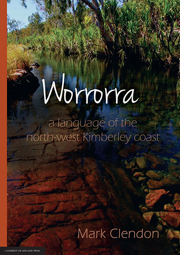Book contents
- Frontmatter
- Dedication
- Contents
- List of tables
- List of figures
- Abbreviations
- Acknowledgements
- Chapter One introduction
- Chapter Two segmental phonology
- Chapter Three morphophonology
- Chapter Four nouns and noun classes
- Chapter Five indicative mood and basic verbal morphology
- Chapter Six adjectives and inalienable nouns
- Chapter Seven pronouns, demonstratives, anaphors, deictics
- Chapter Eight optative, counterfactual and exercitive moods
- Chapter Nine number
- Chapter Ten adverbs and postpositional phrases
- Chapter Eleven complex predicates
- Chapter Twelve experiencer constructions
- Chapter Thirteen objects and possession
- Chapter Fourteen complement clauses
- Chapter Fifteen subjunctive verbs
- Chapter Sixteen middle voice
- Chapter Seventeen discourse cohesion
- Chapter Eighteen kinship terms
- Appendices
- References
Chapter Five - indicative mood and basic verbal morphology
Published online by Cambridge University Press: 05 October 2014
- Frontmatter
- Dedication
- Contents
- List of tables
- List of figures
- Abbreviations
- Acknowledgements
- Chapter One introduction
- Chapter Two segmental phonology
- Chapter Three morphophonology
- Chapter Four nouns and noun classes
- Chapter Five indicative mood and basic verbal morphology
- Chapter Six adjectives and inalienable nouns
- Chapter Seven pronouns, demonstratives, anaphors, deictics
- Chapter Eight optative, counterfactual and exercitive moods
- Chapter Nine number
- Chapter Ten adverbs and postpositional phrases
- Chapter Eleven complex predicates
- Chapter Twelve experiencer constructions
- Chapter Thirteen objects and possession
- Chapter Fourteen complement clauses
- Chapter Fifteen subjunctive verbs
- Chapter Sixteen middle voice
- Chapter Seventeen discourse cohesion
- Chapter Eighteen kinship terms
- Appendices
- References
Summary
This chapter is concerned with a description of the morphology and semantics of minimally-extended, fully-finite, active verb forms in canonical or characteristic usage; that is, with the inflexion of morphemes signalling core argument structure, tense and aspect. To achieve this, the formally and functionally unmarked indicative category will be taken as an exemplar. Indicative verb forms denote positive, factual assertions and questions in typical reference-and-predication discourse styles.
Worrorra finite verbs occur in four inflexional categories or form-classes, as follows:
(i) Indicative mood, described in this chapter,
(ii) Optative mood (§8.1 & §8.2),
(iii) Counterfactual mood (§8.3 & §8.4),
(iv) Subjunctive mood (§15).
As well, a lexical category consisting of non-finite verb forms (preverbs) is described in §11.2.
Classes of verb-forms are defined by the shapes of their prefix clusters and by the shapes of their tense-marking morphemes, both of which are specific to each form-class. These formal distinctions encode a separate and specific semantics in each case, and in each case the entire formal and functional package will be referred to as a mood. Different modalities within each mood are brought into being by constraints on the occurrence of tense and aspect morphemes in order classes [9] and [13].
Indicatives are unmarked forms, while the other three moods are marked. Indicative forms are therefore simpler than the shapes of the other moods, and so indicative prefix clusters are employed in §5.3 to illustrate the way grammatical relations are indexed. The prefix clusters that uniquely characterize indicative forms are set out in Tables 5.1 and 5.2 in §5.3.2. The other forms signalling this mood are its tense markers, which appear in order-class [9] and are displayed in Tables 5.4 and 5.5 in §5.4.
- Type
- Chapter
- Information
- WorrorraALanguage of the North-West Kimberley Coast, pp. 98 - 127Publisher: The University of Adelaide PressPrint publication year: 2014



